 Music
has always been an important factor in the lives of Jamaicans and other West
Indians. Jamaican music comes from an African foundation, influenced early on
by the music of Europe, especially England & France, and later by American
popular music.
Music
has always been an important factor in the lives of Jamaicans and other West
Indians. Jamaican music comes from an African foundation, influenced early on
by the music of Europe, especially England & France, and later by American
popular music.
The great-great grandparent of Reggae is mento, a loose-sounding folk music, sometimes confused with calypso, a Trinidad-born music. Mento's lyrical food is topical issues. It draws on the fife and drum music of Jonkanoo, Pocomania church music, the quadrille, and work songs learned on plantations, and passed through generations.
By the 1950s Jamaican youth were more interested in listening to American music, popularized by radio stations in the US south, and sound systems - portable dance machines that were to change the face of Jamaican music. Soon dance halls would rock to the beat of Duke Reid's Trojan sound, Sir Coxsone's Downbeat, Prince Buster's Voice Of The People, V-Rocket, and many others. To protect the identity of the their music many sound system operators defaced or removed the labels from their records.
In short order local musicians were called on to record music that emulated the sound of the imported American music. "Jamaican Blues" or "Blue Beat" was a shuffling Jamaican interpretation of R & B. As time wore on the prominence of the off-beat rhythm supplied by the horn section grew, as did that of the guitar or piano. By 1958 this style was fast transforming into a blazing fire - Ska! It is said that the sound of the off-beat horn riff inspired the term Ska.
 Cuban
music also had its influence. Brought to Jamaica by immigrants like Rolando
Alphonso it has played a key role in the development of Jamaican music.
Trinidad, Barbados and other West Indian islands also exported singers and musicians
to Jamaica (like Lynn Taitt and Jackie Opel). They too brought
their musical influences to the birth and development of Ska, Rock
Steady and Reggae.
Cuban
music also had its influence. Brought to Jamaica by immigrants like Rolando
Alphonso it has played a key role in the development of Jamaican music.
Trinidad, Barbados and other West Indian islands also exported singers and musicians
to Jamaica (like Lynn Taitt and Jackie Opel). They too brought
their musical influences to the birth and development of Ska, Rock
Steady and Reggae.
![]()
Ska combines the catchy backbeat of New Orleans- style R & B, and mento. Many early Ska songs were covers of popular American songs. Typically Ska drums stress beats 2 & 4 over a "walking" quarter-note bass, with the guitar or piano striking the offbeats in a syncopated mento style. Ska's tempo was especially appealing to the restless Jamaican youth, and was always the music of the poor.
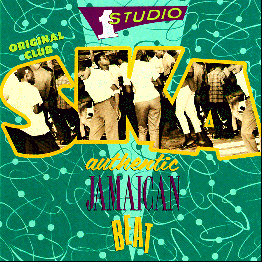
![]() Some
reggae historians identify the R & B song that fathered the Ska
beat as "No More Doggin'" (1952) by Roscoe Gordon, a Memphis piano
player. The "one and two and three and four" beat had been around
since the 1940s, and was used by Rhythm & Blues artists like
Louis Jordan & Big Joe Turner. Theophilus
Beckford is considered by many to have recorded the first
Ska tune, "Easy Snapping", in 1959. The recording
was produced by Lloyd "Matador" Daley, and arranged by Ernest
Ranglin.
Some
reggae historians identify the R & B song that fathered the Ska
beat as "No More Doggin'" (1952) by Roscoe Gordon, a Memphis piano
player. The "one and two and three and four" beat had been around
since the 1940s, and was used by Rhythm & Blues artists like
Louis Jordan & Big Joe Turner. Theophilus
Beckford is considered by many to have recorded the first
Ska tune, "Easy Snapping", in 1959. The recording
was produced by Lloyd "Matador" Daley, and arranged by Ernest
Ranglin.
Cluet Johnson AKA "Clue J" was important to the development of Clement "Coxsone" Dodd's desire in the late 1950s to establish a distinctive Jamaican musical sound. Clue J's distinctive stage greeting - skavoovie, lead some to define this as the root of the term Ska.
The first Ska song to hit outside of Jamaica was Millie Small's "My Boy Lollipop" (1964 Island). Sir Lord Comic's "The Great Wuga Wuga" (1967 WIRL(JA)), a musical advertisement for his sound system, was one of the last great Ska tunes.
The Skatalites, who truly defined the various Ska-era styles, were ubiquitous in the mid-60s, but only held together for about 14 months (1964-65). The original Skatalites were jazzmen in the 1940s & 1950s, bringing the influence of big-band, bebop & the Blue Note sound to the new Jamaican dance sound. Reforming in the 1980s they continue to excite audiences worldwide even though some of the original members have recently passed on.
Since the 1960s Ska has been adapted and revived in many forms, and continues to be popular around the world.
![]()
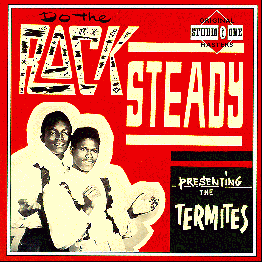 When
ska began its change into the more sophisticated-sounding
Rock Steady during the mid-1960s singers came into
their own. While the tempo remained about the same Rock Steady
carried a relaxed rhythmic density.
When
ska began its change into the more sophisticated-sounding
Rock Steady during the mid-1960s singers came into
their own. While the tempo remained about the same Rock Steady
carried a relaxed rhythmic density.
In Rock Steady the guitar only strums on beats 2 & 4, and the bass guitar emphasizes beats 1 & 3.
Drums are less prominent in Rock Steady as their rhythmic role was being taken over by the bass guitar. Drums provided accents, or were inaudible. Less predominant horns and less-rigid beat offered more vocal possibilities. Rock Steady was perfect for romantic group vocals.
The best examples of Rock Steady were recorded for producer Duke Reid. The studio band at Reid's Bond Street studio, the famed Treasure Isle Studio, was made up of the best of the best. Led by Tommy McCook, The Supersonics featured drummers Arkland "Drumbago" Parks and Hugh Malcolm, and guitarists Ernest Ranglin and Lynn Taitt.
Rock Steady lived a far longer life than the three years usually attributed to it (1966-1968), and it still forms the foundation of new riddims.
![]()
By 1969 the new, enduring sound of Reggae (often spelled Reggay in the early years) had established itself. Reggae is closer to the chanting, meditative Nyabinghi sound, and lends itself to musical meditiation. The Rock Steady years brought the bass to prominence. The strength of the booming bass line continues in Reggae. Jamaicans have always been fond of the bass sound, as seen in mento music. Reggae takes it to higher heights. It is the "riddim" that makes the song, and results in the versions.
![]()
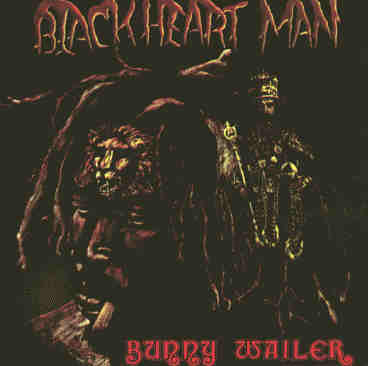
![]() Like
most popular music of the western world, Reggae is played in 4/4 time
- 4 beats to a bar of 4. The strongly felt beats, or downbeats, are
beats 2 & 4, opposite to most pop music. Some claim that this has
made Reggae's acceptance difficult in North America (leaden 1 & 3
feet?)!
Like
most popular music of the western world, Reggae is played in 4/4 time
- 4 beats to a bar of 4. The strongly felt beats, or downbeats, are
beats 2 & 4, opposite to most pop music. Some claim that this has
made Reggae's acceptance difficult in North America (leaden 1 & 3
feet?)!
The One Drop style is defined by the drumming pattern. With the expectation of the bass drum hitting on beats 1 & 3, the "one" is "drop"ped. There's much more to it though. The snare may emphasize the 3rd beat. The bass may emphasize beat 1 with a strong note, but also often misses the first beat too. The high hat may emphasize the 1st beat. By this definition, Ska must be considered the original "one drop" rhythm.
Rockers is a style of Reggae beat that originated in the mid-1970s. Unlike the earlier "one drop" style which has the bass drum play on the 3rd beat of every measure, in a rockers beat the bass drum plays on all four beats of the measure, like the bass drum in a disco beat. In fact, this beat is probably influenced by the sound of disco music.
One drop bass drum pattern: 1 2 3 4
^
Rockers bass drum pattern: 1 2 3 4
^ ^ ^ ^
The term Rockers came to be a generic term for 1970s reggae, partly due to the emphatic nature of the term.
By 1970 the early, jumpy Reggae was replaced by slower rhythms that better suited the lyrics that were surfacing - lyrics of oppression and sufferation.
![]()

![]() Rastafari
has always been strongly linked to Reggae, making the music important
socio-politically as well as culturally. Rastafari have sighted Jah
since the late 1930s, but came to the world's notice in the 1970s
through Bob Marley's righteous music.
Rastafari
has always been strongly linked to Reggae, making the music important
socio-politically as well as culturally. Rastafari have sighted Jah
since the late 1930s, but came to the world's notice in the 1970s
through Bob Marley's righteous music.
Rastas share the belief that Africa is their homeland, and that, through repatriation, they will escape the Western Babylon. Rasta is not a church. It is more a core of spiritual and cultural beliefs open to a variety of interpretations.
![]()
Jamaican music has changed considerably over the past 40 or so years, stretching forth in many directions, absorbing other sounds, and influencing many. These are the many shoots of the Reggae root.
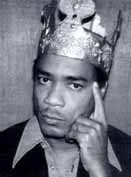 Dub
music is the result of the engineer restructuring the sound on the mixing board,
melding soundboard effects with spacey blendings of large and small portions
of the original track. King Tubby was and is the monarch of Dub.
Dub
music is the result of the engineer restructuring the sound on the mixing board,
melding soundboard effects with spacey blendings of large and small portions
of the original track. King Tubby was and is the monarch of Dub.
By the late 1960s most Jamaican 45s had a single on the A-side and an instrumental version (sans vocal track) on the B-side. King Tubby, while working at Duke Reid's Treasure Isle studios, began adding, subtracting, filering, reverbrating and echoing, one, some or all of the original recording's tracks. As studios ability to record more individual tracks grew dub engineers were able to achieve finer control over their musical concoctions.
The term Lover's Rock, which originated in British media in the 1970s, describes songs that do not reflect the culturally-reflective sound of many Reggae recordings. Early representative singers include John Holt & Ken Boothe. In the 1980s Gregory Isaacs came to define the style. Not only is the subject matter different. Lover's Rock sounds beautiful and lush. Many British recordings are complemented by strings.
Deejays speak their lyrics rhythmically, rather than sing them. Singjays like Eek-A-Mouse mix the styles. [More to come.]
The sounds and rhythm of the words are expressed through Dub Poetry all come from the root. [More to come.]
Dancehall, Ragga and Jungle music are the latest trends in the everchanging Jamaican sound experience. The introduction of digital musical equipment in the mid 1980s drove some of these developments.
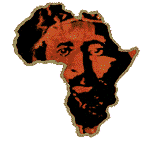 The
emigration of Jamaicans and other West Indians to Europe and North
America has both spread the vibe and blended other musical ideas to
Reggae. London, England; New York, USA and Toronto, Canada have been
popular destinations for Jamaican emigrees since World War II. In
these, and many other places over the years, Reggae has developed
from a "memory of Yard" to a musical form interpreted by singers and
players from many roots.
The
emigration of Jamaicans and other West Indians to Europe and North
America has both spread the vibe and blended other musical ideas to
Reggae. London, England; New York, USA and Toronto, Canada have been
popular destinations for Jamaican emigrees since World War II. In
these, and many other places over the years, Reggae has developed
from a "memory of Yard" to a musical form interpreted by singers and
players from many roots.
All in all, Reggae has exerted an international musical and social impact remarkable for a relatively small nation like Jamaica - The Loudest Island in the World.
![]()
 Reggae
Readings
Reggae
Readings Many
good books have been written about Reggae and related subjects. The
following "Books 'bout Reggae" take a fairly thorough look at
Jamaican music, from a few different perspectives. They all address
the developments in Jamaican music over the past 40+ years. Listings
are alphabetic by Title.
Many
good books have been written about Reggae and related subjects. The
following "Books 'bout Reggae" take a fairly thorough look at
Jamaican music, from a few different perspectives. They all address
the developments in Jamaican music over the past 40+ years. Listings
are alphabetic by Title.
To order any book on-line from Chapters.ca click on the book's cover picture.
BOOKS
'BOUT REGGAE "Reggae
Island: Jamaican Music in the Digital
Age"
by Brian Jahn & Tom Weber (1998, Da Capo
Press, Paperback, 254 Pages, ISBN 0-306-80853-6). Over 50
contemporary reggae artists (including Buju Banton, Shabba
Ranks, Tony Rebel, Burning Spear, Bunny Wailer, Judy Mowatt,
Oku Onuora & Junior Reid) and producers, from Cultural
Roots to Dancehall, present their views on the state of
Reggae in the early 90s, its developments since Bob Marley's
death, and the directions it is evolving in. More than 150
of Brian Jahn's photographs grace its pages. Originally
published in Jamaica in 1992. "Reggae
Routes: The Story of Jamaican
Music"
by Kevin O'Brien Chang & Wayne Chen (1998,
Temple University Press, Paperback, 256 Pages, ISBN
1-56639-629-8). Two Jamaicans take a developmental approach
to their study of Reggae music - what they "born and grow
wit'". In describing the development of the music, they
identify the most popular artists and songs of the times,
and higlight the issues that influenced the music. The book
also contains historical radio charts, and the authors own
All-Time Top 100. "Reggae
The Rough Guide"
by Steve Barrow & Peter Dalton (1997,
Rough Guides, Paperback, 395 Pages, ISBN 1-85828-247-0).
Barrow & Dalton take a chronological approach to the
study of reggae's origins in the 1950s, and its progression
and development into an international musical force. There
are chapters on Reggae in Britain, the USA and Africa. The
book also contains more than 1000 CD and vinyl
recommendations. The authors have been with the music for
over 20 years. Steve Barrow runs the Blood &
Fire(UK) re-issue label. "The
Virgin Encyclopedia of
Reggae"
by Colin Larkin (1998, Virgin Books, Paperback, 352
Pages, ISBN 0-7535-0242-9). Larkin takes an encyclopedic
approach, providing easy access to information on prominent
artists, groups and those who influenced the music's
development. The first edition is expansive, but misses a
few people that will hopefully be remembered in a future
edition. Includes a Recommended Listening list and
Bibliography. All entries were created from The
Encyclopedia of Popular Music, first published by Colin
Larkin in 1992. BOOKS
'BOUT BOB "Catch
A Fire: The Life of Bob
Marley"
by Timothy White (1995 Revised, Henry Holt,
Paperback, 496 Pages, ISBN 0805011528). "Catch A Fire"
chronicles the life and career of Bob Marley and the milieu
that shaped his spiritual and political beliefs. Of the many
books on Marley "Catch A Fire" provides one of the fullest
biographies. This is as much a book about Jamaica and its
culture as it is about one Jamaican's life. Includes a
detailed discography for individual Wailers' members.
Originally published in 1983 the revised edition adds
information on Jamaica's troubled music business.
Go To the Crooked Beat Home Page.
|
|